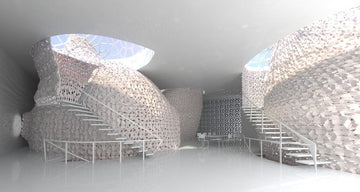In the age of interconnected devices and seamless technology integration, 3D printed electronics have emerged as a groundbreaking innovation, seamlessly fusing functionality with design. This captivating synergy has not only revolutionized the creation of wearable technology and Internet of Things (IoT) devices but has also unleashed a wave of creativity that blurs the line between form and function. In this article, we embark on a journey into the realm of 3D printed electronics, exploring its evolution and the boundless potential it holds for wearable tech and the IoT landscape.
1. From Conventional to Revolutionary:
The Evolution of 3D Printed Electronics:
Traditionally, the worlds of electronics and 3D printing seemed distinct, but technological strides have united these domains. The development of conductive materials and specialized 3D printing techniques, such as Direct Ink Writing and Aerosol Jet Printing, has paved the way for the creation of intricate electronic components directly within 3D printed structures.
2. Wearable Tech: Merging Fashion with Function:
The marriage of 3D printed electronics and wearable technology has given rise to a realm of possibilities. Smartwatches, fitness trackers, and even clothing embedded with sensors and circuitry are now crafted with intricate designs that seamlessly integrate technology into everyday life. 3D printing enables the creation of customized, comfortable, and stylish wearable devices that cater to individual preferences and needs.
3. IoT Devices: Sculpting Smart Environments:
The Internet of Things envisions a world where objects are interconnected, communicating and responding to each other. 3D printed electronics play a pivotal role in this vision, as they allow for the creation of unique and intricate IoT devices. Smart home sensors, environmental monitors, and interactive interfaces can be artfully designed and seamlessly integrated into living spaces, enriching the user experience and enhancing efficiency.
4. Enhanced Aesthetics: Turning Circuitry into Art:
Gone are the days of concealing electronics behind bland casings. 3D printed electronics celebrate the fusion of technology and aesthetics, enabling designers to create visually striking and functional pieces that are as much works of art as they are innovative devices. The blending of form and function empowers creators to challenge design conventions and captivate users on both visual and experiential levels.
5. Rapid Prototyping and Customization:
The iterative nature of 3D printing allows for rapid prototyping and customization of electronic devices. Designers and engineers can quickly iterate their designs, testing different forms, functions, and placements of electronic components. This flexibility not only accelerates the development process but also fosters innovation and experimentation.
6. Democratizing Innovation: Empowering Creators Everywhere:
3D printed electronics democratize the process of innovation by making technology accessible to a wider range of creators. Entrepreneurs, artists, hobbyists, and researchers can experiment with integrating electronics into their designs, bringing their visions to life without the need for extensive technical expertise or resources.
7. Future Horizons: Beyond the Present Possibilities:
As 3D printing technology continues to evolve, the potential applications of 3D printed electronics are limited only by imagination. From medical devices and smart textiles to interactive artworks and beyond, the fusion of electronics and 3D printing opens doors to a world where functionality and design harmoniously coexist, enriching our lives and shaping the future.
Conclusion:
The emergence of 3D printed electronics is a testament to the boundless potential of human creativity and innovation. Through its integration of functionality and design, this revolutionary technology is transforming wearable tech and IoT devices into works of art that seamlessly blend into our lives. As we gaze toward the horizon, we are met with the exciting promise of a future where technology becomes an extension of self-expression, where devices aren't just tools, but reflections of our individuality and aspirations.






